I’ve had a couple of days off the bike since returning from Mexico, and as promised, I wanted to give you a rundown on what we learned, what kind of problems we had, what we’d do differently, and most significantly, when we’re going again.
Oh, yeah, we’re going to do this again. We’ve already had a lot of requests from folks who want to be on the next ride. The next one will be a lot smoother. I screwed up a few things, but I learned a lot and I know what to do differently next time.
I think the best way to approach the Baja trip recap is to talk about the people issues, the spares issues, and the bikes.
The People Stuff
The people issues were not that big a deal, but there were a couple of things that we’ll emphasize before the next ride.
On a ride like this, it’s imperative that the group stick together. It’s okay to be a free spirit, but we were on a group ride and not everyone understood that at first. In Baja the towns are literally hundreds of miles apart. Being stranded in the Vizcaino desert could have been a very bad thing. We had agreed we would stick together, but in practice, that didn’t always happen. There’s no room for being a lone vagabundo on a trip like this. That happened a couple of times, and the result was a lot of anxiety, lost time, and frayed nerves until we were able to regroup.

Beauty with matching desolation
Human nature being what it is, folks have different ideas about the concept of time, both in the morning and after every rest break. You can imagine what it was like to be fully suited up with a riding jacket, a full-face helmet, and gloves in 103-degree weather while someone dinked around getting ready. We were all guilty of these delays and it’s something we finally corrected, but doing so probably took longer than it should have.
The Spares
I’ve been traveling in Baja for a long time and I thought I knew what I needed to bring. Boy, did I get an education. Had it not been for J and his Power Wagon we would have not been as prepared as we needed to be.
Water was a big deal. September is the hottest month of the year, but I thought if I had a couple of bottles of water I’d be okay. J came through for us. He had several jerry cans of good Nevada tap water and a refrigerator on the Power Wagon. It literally saved the day…9 days, as a matter of fact.
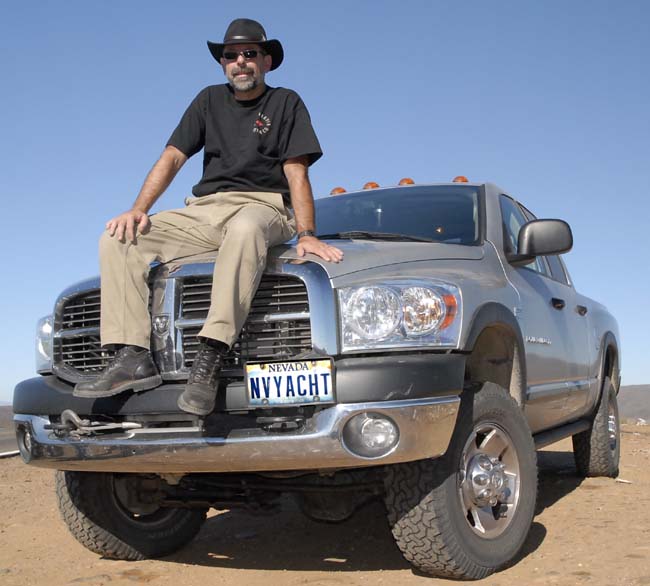
Two amazingly competent entities...J Brandon and his Power Wagon
J bought other stuff that came in handy…shop towels, handi-wipes, and other incidentals like that. It was nice having a chase vehicle with these things, and it really helped.
We brought along a complete Craftsmen’s mechanics tool kit with 159 tools. The Craftsmen tools were great; the plastic carrying case was a joke. I never could figure out how to open or close it without the tools spilling out of their plastic indentations. I think the Sears people realized this, too, as the carrying case had a big hollowed-out cavity at the bottom that all the tools fell into, which occurred every time I opened the thing. We would have done just as well throwing all of the tools into a plastic sack; that’s what the tool case ultimately became.
We brought spare parts with us based on what kinds of issues we had experienced on the bikes prior to our departure, and for the most part, that served us well (I’ll discuss the bike issues below). One thing I didn’t bring was a spare battery. We never had a battery failure on a California Scooter prior to this trip, so it just didn’t occur to me that I’d need one. More on that later…
I had asked that we pack a couple of spare tires, and Steve was way ahead of me here. He stuck two complete tire-and-wheel assemblies on J’s Power Wagon. I ripped up a tire, and it was a lot easier replacing my rear tire-and-wheel assembly than it would have been to replace just the tire. That helped a lot.
For the most part, we brought way more spares with us than we needed (with the exception of a spare battery), which I guess is okay in the grand scheme of things. It’s better to have something and not need it than the other way around, and because we had the Power Wagon, it was easy to carry all of it.
The Bikes
Our intent on this trip was to beat the heck out of our California Scooters and find issues offering improvement opportunities. The idea is that we would do so here so that you won’t have to on your bike.
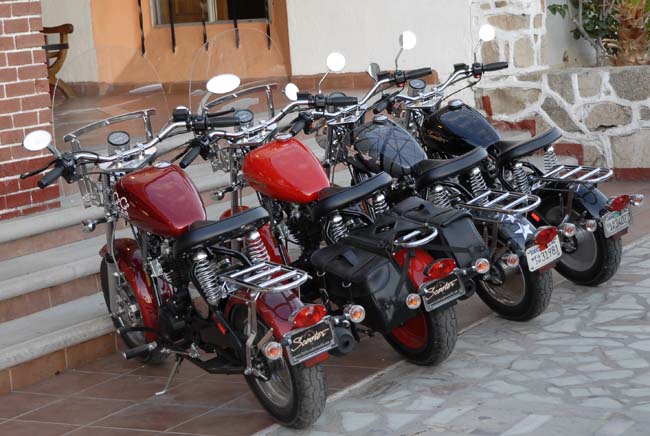
The Floggees...Arlene's Go Go Gear bike, my red Classic, Simon's Rock Star, and John's black Classic
Baja is a proving ground…there’s no question about that. When I was a kid, American Motors came out with a new car that they entered in the Baja 1000 (I think it was their AMX model). Their commercials had a race car driver explaining to a Bajaeno that they were entering the car in the Baja race. The Bajaeno responded with “You’re going to enter theese hunk of tin in the Baja? Ha ha!” It was an image that stuck in my mind. Our direction from the top (that would be Steve) was to try to break the bikes, and Baja would be the place to do it.
And try we did…we rode over 2000 miles through some of the toughest riding conditions on the planet (take a look at the videos below and you’ll see what I mean). Simon commented that what we were doing with these bikes was probably something no other owner would ever do with their California Scooters. Rough asphalt. Dirt roads. Hundreds of miles a day with wide open throttles. 100-degree temperatures. High humidity. Up and down mountain passes. Long straights through the desert. You get the idea.
So, what broke?
I expected to have lots of light bulb failures, as I’ve had those on virtually any motorcycle I’d ever taken through Baja (and elsewhere, for that matter). I bought a bunch of 1157s for the tail lights, and a half dozen headlight bulbs. As it turned out, that was massive overkill. We had one headlight failure (Arlene’s conked out just before we reach Cabo San Lucas), and I had two tail light failures on my bike. Part of what caused my tail light failures might have been my defective rear tire…it was unbalanced due to the rip I put in it and that made the rear end on my bike vibrate a lot. Nobody else needed a bulb replacement. I was surprised at how few bulb failures we had.
I guess I should point out that we had two preproduction bikes and two production bikes on this trip. Part of the test was to gage our success with the improvements we made when we went from the preproduction to the production bikes. We wanted to see the same failures on the preproduction bikes as we had seen earlier, and we didn’t want to see those failures on the production bikes. I think we succeeded.
One of the problems we had experienced on the preproduction bikes back in La Verne was an occasional failure of the welded frame tab to which the muffler attaches. We strengthened that tab and its weld joint on the production bikes. Both tabs failed on the preproduction bikes within the first two days of riding in Baja; neither of the production bike muffler mounting tabs failed during the entire trip. I found a welder somewhere south of Guerrero Negro (my new buddy Umberto). I asked Umberto to fabricate new tabs identical to those on the production bikes, and to weld the new tabs on the preproduction bikes using the same weld pattern as the production bikes. Umberto did so, and the welds on the preproduction bike held for the remainder of the trip.
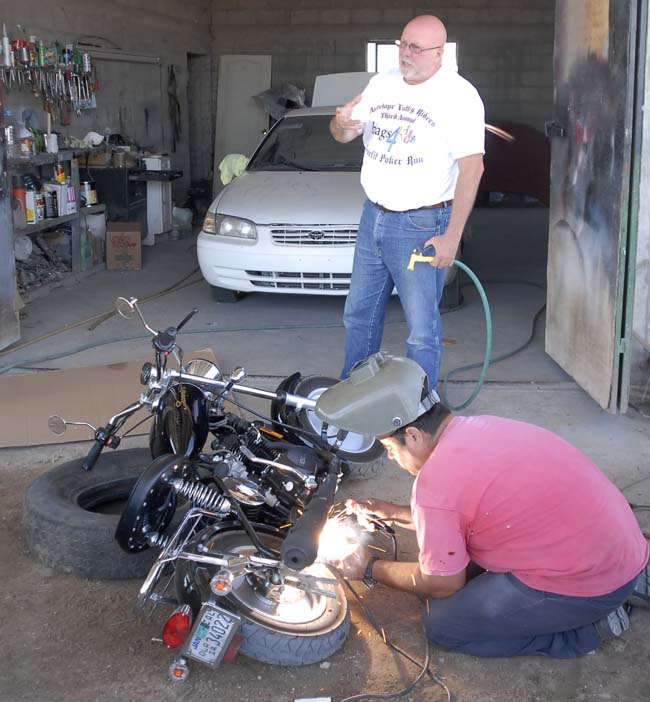
My new friend Umberto modifying John's preproduction bike to the production bike configuration...a mod that worked for the rest of the trip. Note John standing by to put out any fires.
As mentioned above, we had two battery failures, and both occurred on the preproduction bikes. Neither of the production bikes had any battery problems. There’s nothing inherently different between the preproduction bikes’ batteries or charging systems and those on the production bikes, and at first, I was a little nervous about having a similar problem on the production bikes. Then, as the miles rolled by, I realized that the preprod bikes had batteries with a lot of time on them. The batteries in both preprod bikes had been in those bikes for at least a year and a half, and who knows how old the batteries were before we installed them. We were flogging these bikes in high temperatures, and that’s why the batteries conked out.
When we got back to the plant, we put new batteries in both preproduction bikes, and both fired right up and ran just fine. The lesson here…don’t leave on a long trip through Baja with an old battery. Duh. The weather conditions – high heat and humidity – were tough on batteries…even J’s Power Wagon had a dead battery one morning and needed a jump to get going.
One thing about this battery business that was interesting was that Simon’s preproduction bike battery failed in a manner that didn’t allow the bike to start at all. John’s preproduction bike battery failed in a manner that allowed the bike to be kick started. John began the trip with the idea that he would kick start his bike for the entire trip…he just didn’t know when he started that he was going to have to do that. And that’s what he did. John rode that preproduction bike for 9 days and 2000 miles, kick starting it all the way.
As I mentioned above, I tore up a tire. I noticed one afternoon that the tire was bald in just one spot, almost as if the rear wheel had been skidded for a long distance. I know I didn’t do that; maybe someone who rode my bike did. Or maybe I hit something in the road that damaged the carcass. Whatever the cause, I opted not to change the tire until later that day, and sometime in the next 150 miles, the tread split down to the cord in that bald spot. This caused a lot of vibration, but I took a chance on reaching San Ignacio before replacing it and it worked out okay.
I guess the last thing I should mention is that we learned which nuts and bolts you have to keep an eye on during a trip of this nature. Nothing new here, folks…I’ve gone through this with every motorcycle I’ve ever owned. On my Kawasaki it’s the lower fairing bolts, the muffler heat shield, the muffler mounts, and the steering stem. On my Triumph Tiger it was the right foot peg and the saddlebag acorn nuts. On my Harley Softail it was, well, nearly everything. On the California Scooter it’s the two 10mm exhaust clamp bolts at the cylinder head, and the 12mm elongated bolt at the bottom of the muffler. It became part of our ritual to check these bolts on our California Scooters each morning.
What else about the bikes?
Well, as you know, we offer rear drive sprockets with 26, 27, 28, 29, and 30 teeth. Our original California Scooters started with 26T rear sprockets, which is fairly tall gearing. My personal bike has a 28T rear sprocket, and so did John’s and Simon’s. I really like the 28T rear gearing, as it seems to really wake up the bike. Arlene, who is a lot lighter than the rest of us, uses a 26T rear sprocket on her bike. Simon rode Arlene’s bike home (she had to fly back from Cabo for a prior business engagement), and the funny thing is, he liked the taller gearing a lot better. You wouldn’t think that a two-tooth gearing difference would make that much of a difference, but Arlene’s bike (even with Simon on it) used about a third less fuel than did our 28T bikes. It also used almost no oil. I found that we needed to add about a quarter of a quart to the other bikes every 500 miles or so, but again, we were flogging them and those little 150cc engines were hauling around some pretty big guys. I may go back to the 26T rear sprocket on my bike. We’ll see.
Another interesting thing I noticed is that after a short while, I stopped thinking about my California Scooter as a 150cc bike. It was a motorcycle, and it rode like a motorcycle. It didn’t feel “little” in any way, other than its light weight. The seating position is about perfect for me. Some of you may find this tough to believe, but I actually found it more comfortable on a long trip than my KLR or my old Tiger. Don’t get me wrong…we’re not suggesting these are mini-Gold Wings…but the fact is, they are pretty comfortable. Simon commented several times that the seat was the most comfortable he’d ever experienced on a motorcycle.
And the engine? Well, as far as I’m concerned, it’s bulletproof. We absolutely flogged these bikes (we essentially ran wide open for the last 500 miles), and we didn’t have a single engine problem. These are good, solid, reliable motors.
So, that about wraps up my after action report on our Baja trip. I mentioned in an earlier blog entry that when I got home, I stared at the bikes for a long time, and the feeling I had (and still have) is one of overwhelming pride. These are great bikes, and as a result of this trip, they are going to be even better.
Oh, and the other question…when are we going again? The third week in March, boys and girls. We’re going down to San Ignacio (the trip will be about half as long as this one was). The weather will be much nicer, and the whales will be in Scammon’s Lagoon.
Wanna go?
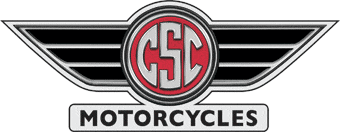




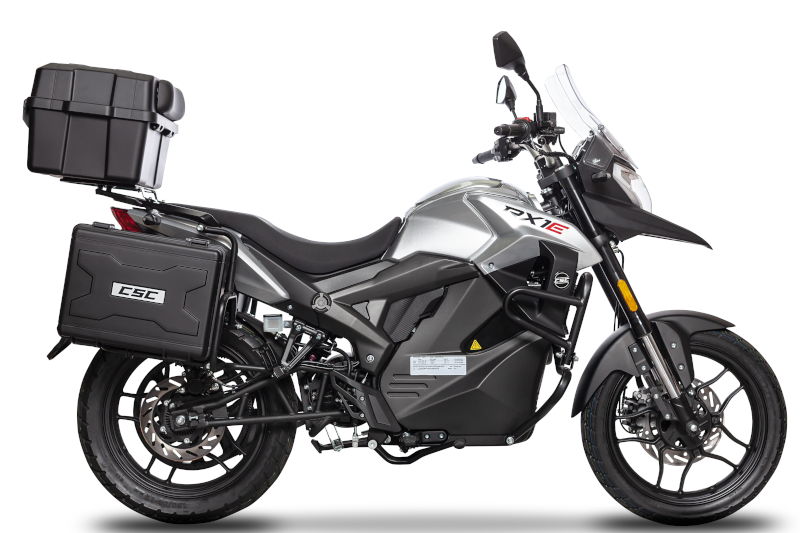 RX1E Electric Motorcycle
RX1E Electric Motorcycle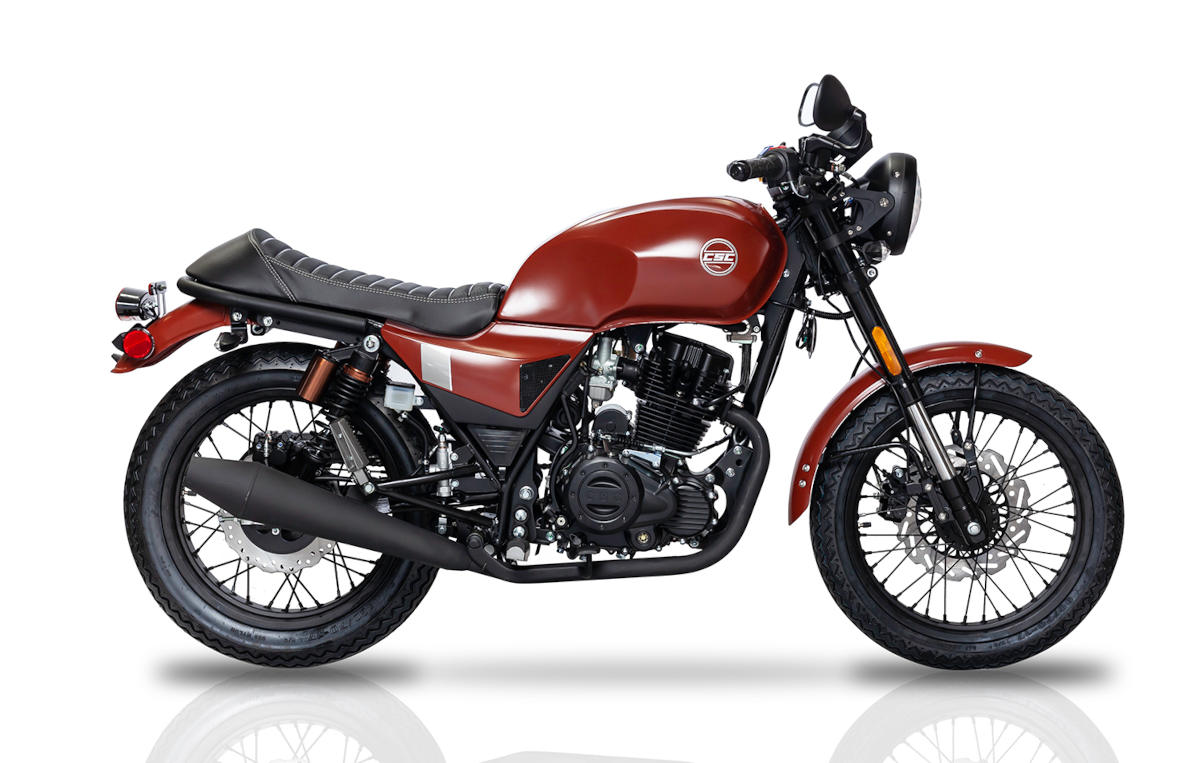 SG250 San Gabriel Cafe Racer
SG250 San Gabriel Cafe Racer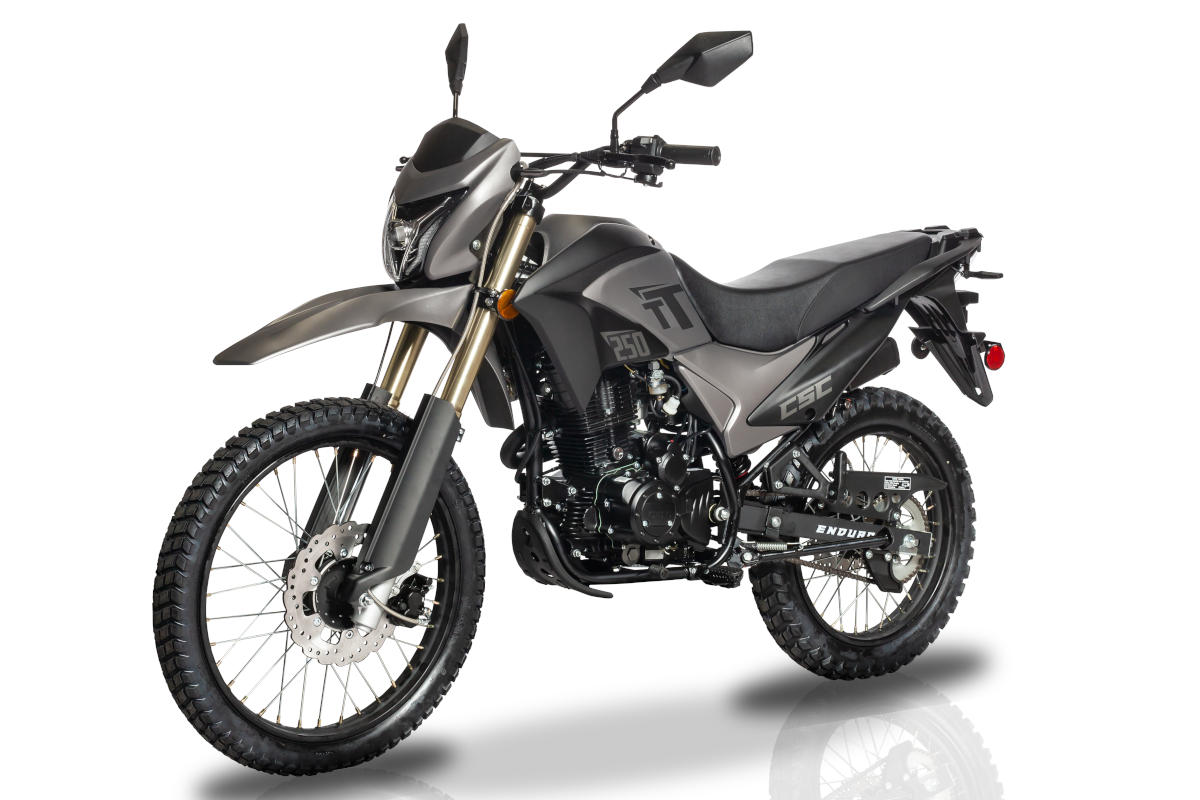 TT250 Enduro
TT250 Enduro
5 Responses to The Baja After Action Report…